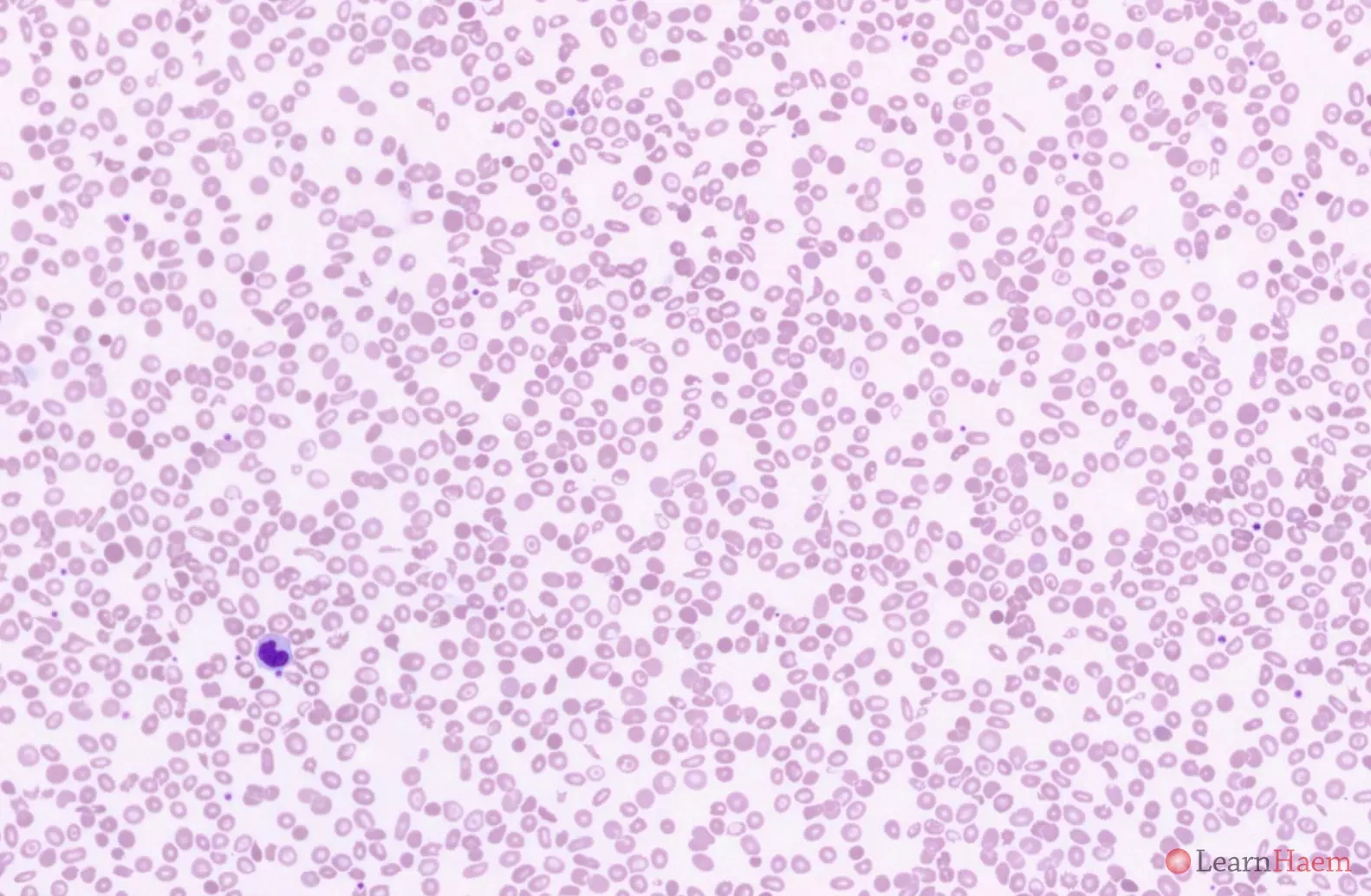Haemoglobin H-Constant Spring disease (––/ααCS) is caused by the co-inheritance of Hb Constant Spring and α0 thalassaemia. The anaemia is usually moderate, with a thalassaemia intermedia phenotype.
Hb Constant Spring is caused by a point mutation in the α globin gene. Most heterozygotes for Hb Constant Spring have the genotype (αα/ααCS), and have a thalassaemia trait phenotype.
The blood film features are identical to that of HbH disease.
Haemoglobin electrophoresis:

Alkaline gel electrophoresis from a patient with haemoglobin H-Constant Spring disease. The gel shows a fast band (red arrow) corresponding to haemoglobin H. There is also a very faint slow band (blue arrow) corresponding to Hb Constant Spring.

Acid gel electrophoresis from a patient with haemoglobin H-Constant Spring disease. The gel shows a band with the mobility of haemoglobin A. The band with the mobility between Hb A and Hb S likely represents degradation products.
HPLC:

HPLC from a patient with haemoglobin H-Constant Spring disease. There is a normal haemoglobin A band which results from the normal alpha gene interacting with the normal beta genes. There is a variant haemoglobin with a short retention time (1.25 min) corresponding to haemoglobin H. In addition, there is another variant haemoglobin in the C-window (blue arrow). This represents haemoglobin Constant Spring.
Other resources:
- Hb H-Constant Spring in North America (Am J Hem 2009)
- Clinical and Molecular Features of HbH
- PHE Family Origin Questionnaire
- PHE Sickle Cell and Thalassaemia Screening Programme (2019)
- BCSH Guideline: Significant Haemoglobinopathies: Guidelines for Screening and Diagnosis (2010)
- BCSH Guideline: Red blood cell specifications for patients with hemoglobinopathies: a systematic review and guideline (2020)
- TIF Guideline: Management of Non-Transfusion Dependent Thalassaemia (2017)
- ASH Image Bank: HbH Disease


Leave A Comment